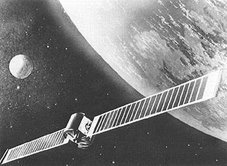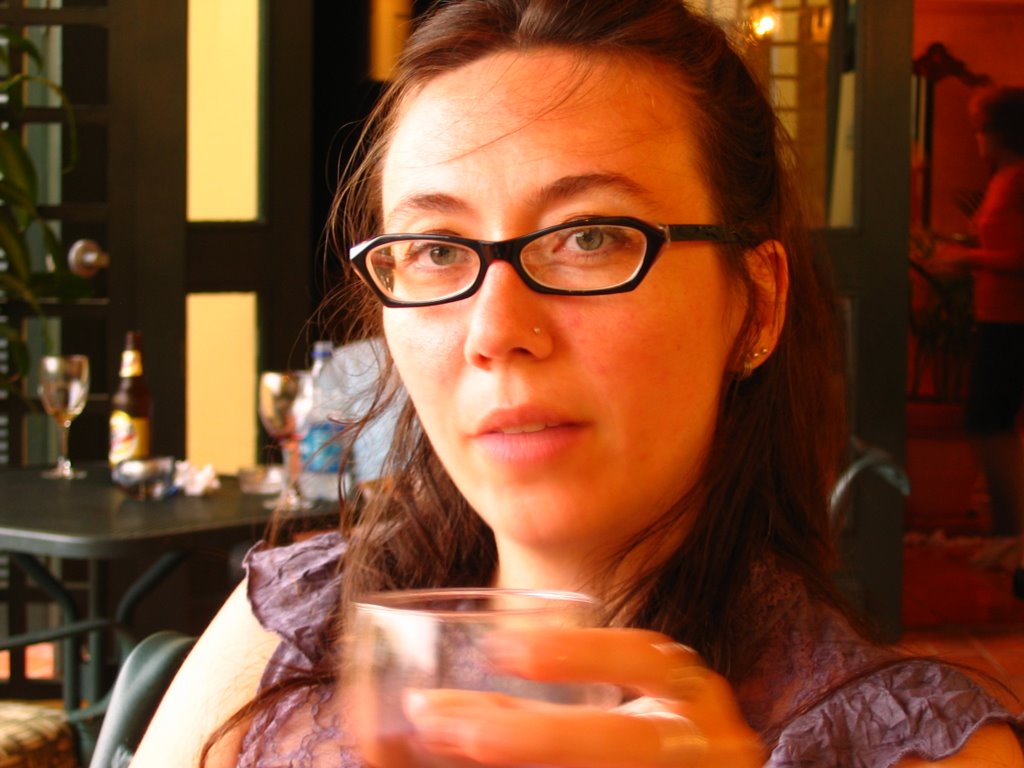It is with deep sadness that we announce the passing of Dr. Gwen Tolliver-Luster, Director of the DC-37 Campus, School of New Resources. A prayer service will take place Wednesday, October 3rd, from 6pm to 6:45pm. The service will be held at Saval Auditorium on the 2nd floor of St. John's University at 101 Murray Street (across the street from the DC-37 Campus).
In lieu of this service, CLASS WILL BE CANCELLED for October 3rd. Please complete your journal 4 assignment online (as scheduled) and email your research paper bibliography to me at jenheuson@yahoo.com. Check the blog (above) for WEEK FIVE assignments. (Yes, you still have homework even though class is cancelled.)
Thursday, September 27, 2007
Wednesday, September 26, 2007
SESSION FOUR: Books and Magazines
 In this session, we strive to understand the evolution of print technology and its impact on society. Our focus is on the following questions: 1) How did print technology develop? 2) How has the content of print publications changed? and 3) What role did/do print media have in society?
In this session, we strive to understand the evolution of print technology and its impact on society. Our focus is on the following questions: 1) How did print technology develop? 2) How has the content of print publications changed? and 3) What role did/do print media have in society? FOR NEXT WEEK...
Writing Assignment: Journal 4 (see below)
Project homework: Research paper annotated bibliography in APA or MLA style (min. 3 sources).
Reading: Newspapers, pp. 87 – 118
- JOURNAL 4 -
Select a current news item and find two DIFFERENT print stories on the item. Include a reference of where you found each story. (Name of story/Author/Name of publication/Date)
- Analyze each news story using the SMCR model. (Eg. Who sent the story? What is the message? What channel is used to communicate? Who received the story?)
- Compare and contrast how the news item is depicted in each story. (Eg. How are the two stories similar? How are they different? Etc.)
- Critique the way the news item is covered in ONE of the stories. (Eg. What is censored or left out of the story? Is the story biased? Etc.)
Wednesday, September 19, 2007
SESSION THREE: Media and Society

Tonight's lesson examined the important connections between media and society through a discussion of three key questions: 1) How do media institutions work? 2) What is the relation between media and society? and 3) How do new media technologies spread in society? Media institutions today rely heavily upon media economics to sustain their influence upon society; understanding the significance of media marketing, the distribution of information and the desire for financial profit are essential to understanding media's role in the distribution of information and culture today.
There are a number of critical theories used to analyze media's role in modern society, including notions of political economy, semiotic analysis and functionalism, to name a few. Each theory relies heavily upon dissecting one or more of media's key functions: surveillance, interpretation, socialization, entertainment (and distraction), agenda setting, gatekeeping (censorship) and framing.
FOR NEXT WEEK...
Writing Assignment: Journal 3 (see below)
Project homework: Research paper outline (worksheet).
Reading: Books and Magazines, pp. 57 – 85
Bring a magazine to class next week.
- JOURNAL 3 - What are the social functions of the technology you have selected as your research topic? Which function is dominate? How has the technology been used to create and to distribute culture?
Wednesday, September 12, 2007
SESSION TWO: Communicating in the Information Age

Tonight, we began our investigation of communication technology by examining three crucial questions: 1) What is communication? 2) What tools aid communication? and 3) How have communication tools evolved? Communication is the exchange of information involving a sender, message, channel and receiver. This is known as the SMCR model of communication. Communication can take many forms including linguistic (language), nonverbal (body language), written text, sound, taste and sight. Almost anything can be a form of communication... the color of a shirt, the gait of a walk, the pitch of a word and so on. Communication forms change depending on the number and involvement of senders and receivers. The key forms are intrapersonal, interpersonal, group and mass.
Communication has evolved through four distinct social-historical time periods: pre-agricultural, agricultural, industrial and informational. During each of these periods, people communicated differently (and had different worldviews!) based upon the availability of communication technologies (or tools). A historical progression of communication could look like this: oral traditions (songs, folktales) -> written language (hand-copied books) -> mechanical (printing press, telegraph, photograph, etc.) -> digital (computers, internet). Today, we (in USA, Europe...) live in an information society. This means that the majority (50%) of our economy and workforce are involved in the buying and selling of information. Throughout the remainder of this course, we will attempt to discover what this fact means for our everyday lives (ethics, economics, politics, etc.)
FOR NEXT WEEK...
WRITING: Journal 2 (see below)
PROJECT: Research paper proposal (worksheet).
READING: Media and Society, pp. 29 – 54
- JOURNAL 2 - Using the communication technology you have selected as your research paper topic, discuss how the technology can be used for each of the following communication types: intrapersonal, interpersonal, small group, large group and mass. For one of your examples, analyze the communication using the SMCR model.
Wednesday, September 5, 2007
SESSION ONE: Introduction
Our first class lingered on introductions and a review of the syllabus and course requirements - including online journals, a research paper, a life arts project and a final presentation. To view the course syllabus, schedule and project requirements, select the desired post from the Blog Archive section of the sidebar.
FOR NEXT WEEK...
READING: Preface and Chapter One, "The Changing Media"
PROJECT: Select a communication technology for your research paper.
Weekly journals must be posted to this site. Simply review the question below; select the "Comments" link; type your response in the text box - MAKE SURE YOU HAVE SELECTED "Anonymous" - and click the "Login and Publish" button. And, voila, you're homework assignment is complete! Let's give it a try.
- JOURNAL ONE - What is communication?
FOR NEXT WEEK...
READING: Preface and Chapter One, "The Changing Media"
PROJECT: Select a communication technology for your research paper.
Weekly journals must be posted to this site. Simply review the question below; select the "Comments" link; type your response in the text box - MAKE SURE YOU HAVE SELECTED "Anonymous" - and click the "Login and Publish" button. And, voila, you're homework assignment is complete! Let's give it a try.
- JOURNAL ONE - What is communication?
Saturday, September 1, 2007
Welcome to COM105!

Throughout this course, we will explore how communication technologies define and alter society, culture and community. Through an investigation of particular technologies, their histories and their social impact, we will gain a deeper understanding of the connection between media and society today. The evolution of a variety of media will be examined: including books, magazines, newspapers, recorded music, radio, photography, film, television and Internet. The myriad uses of media (advertising, public relations, storytelling, propaganda, documentation, education, etc.) will be explored as well.
To receive a passing grade in this course, students will be expected:
1. To purchase (and read!) the required course text Media Now: Understanding Media, Culture, and Technology online or at Manhattan Books - 150 Chambers St.
2. To attend regular class sessions, field trips, guest lectures and film screenings.
3. To post 10 weekly online journal entries.
4. To complete a 7-10 page research paper.
5. To complete a Storycorps project for the LAP.
6. To give a final LAP public presentation.
Subscribe to:
Posts (Atom)

